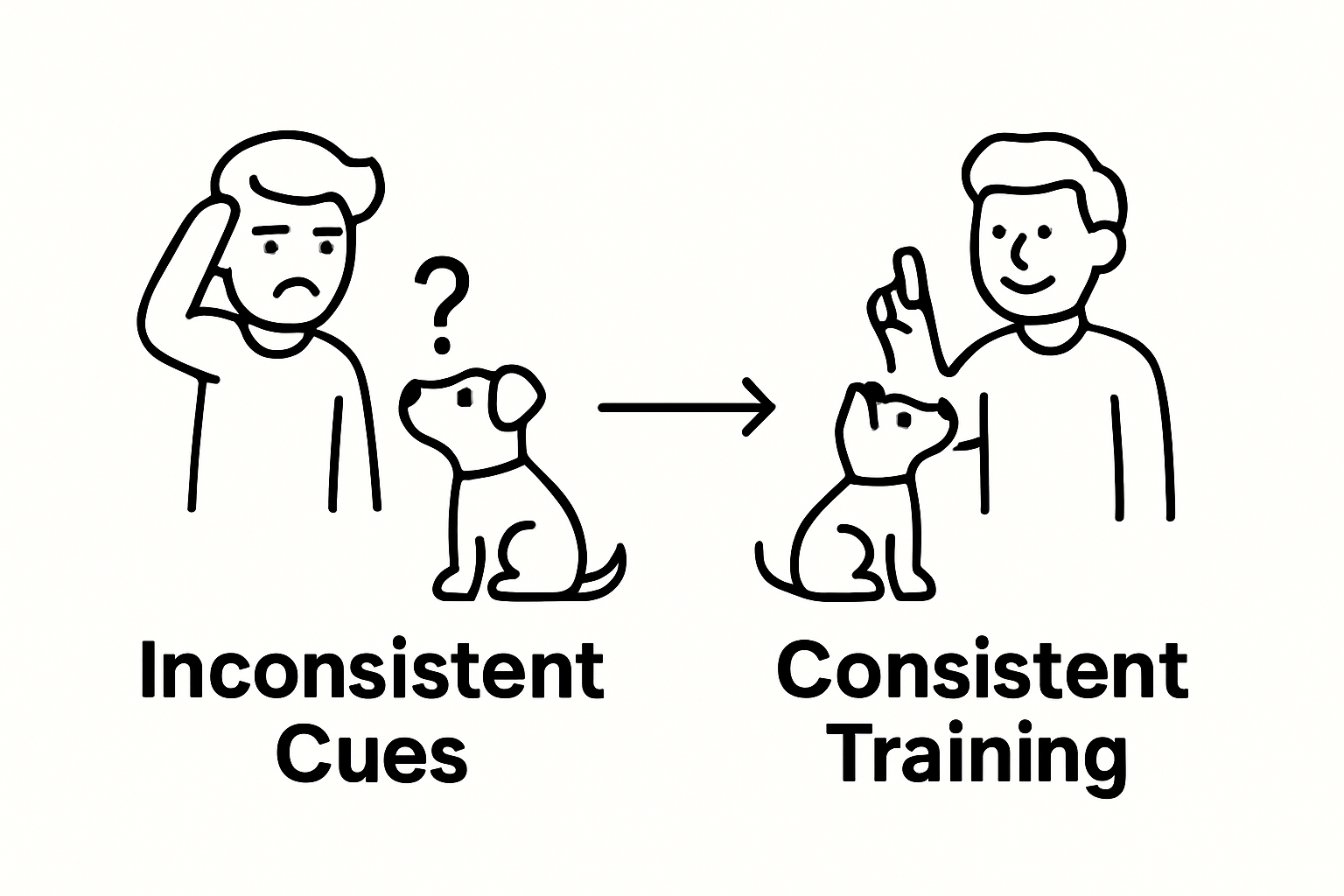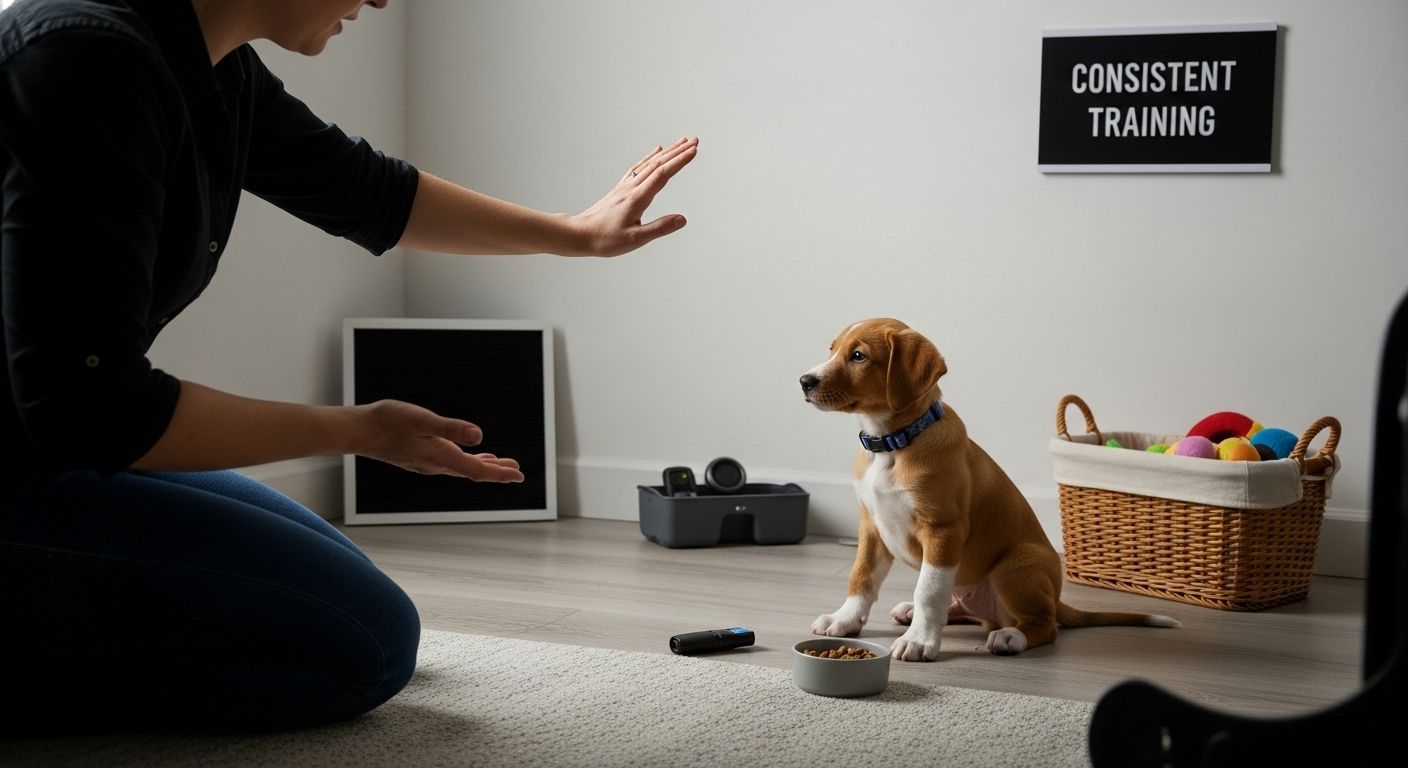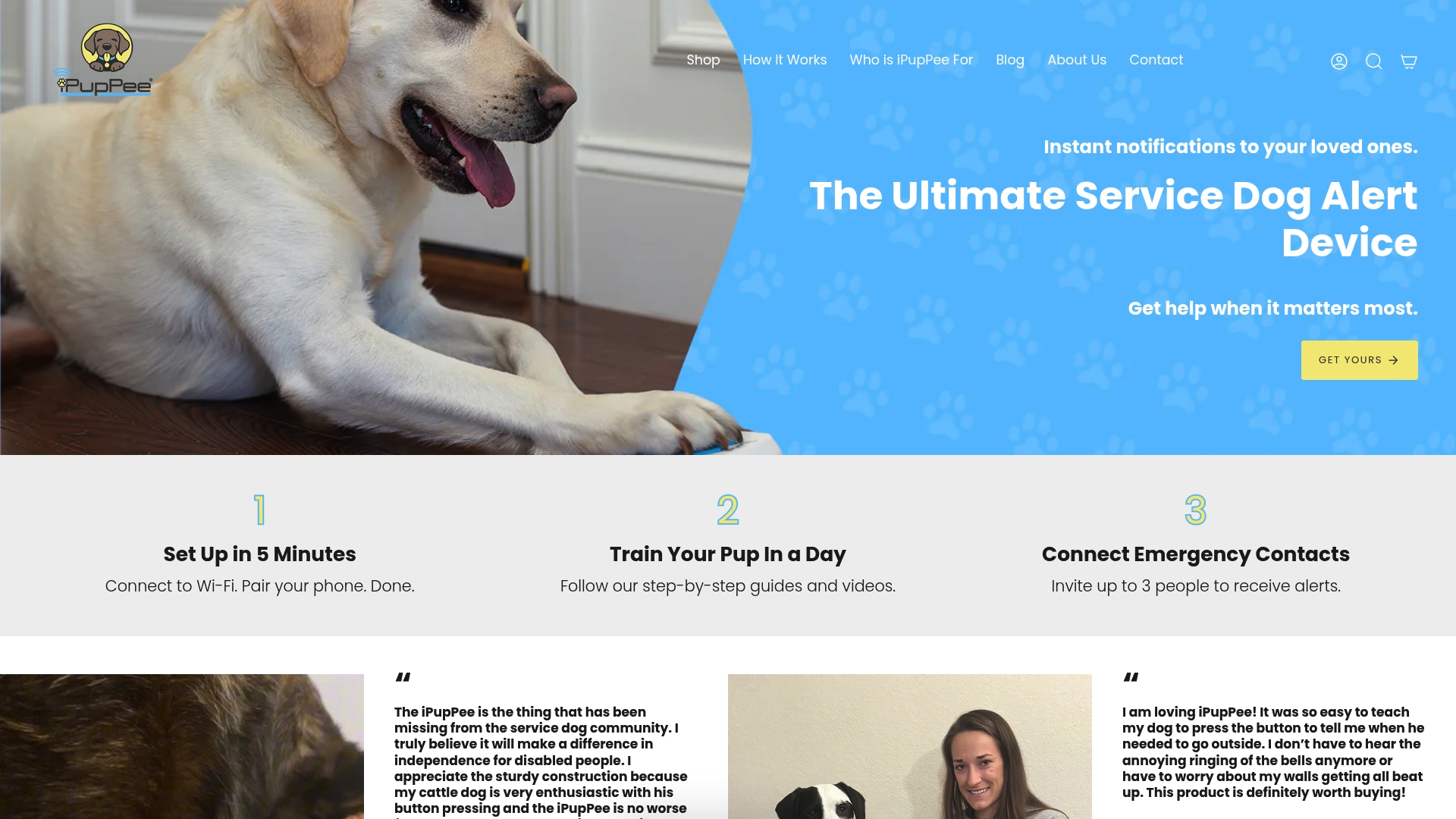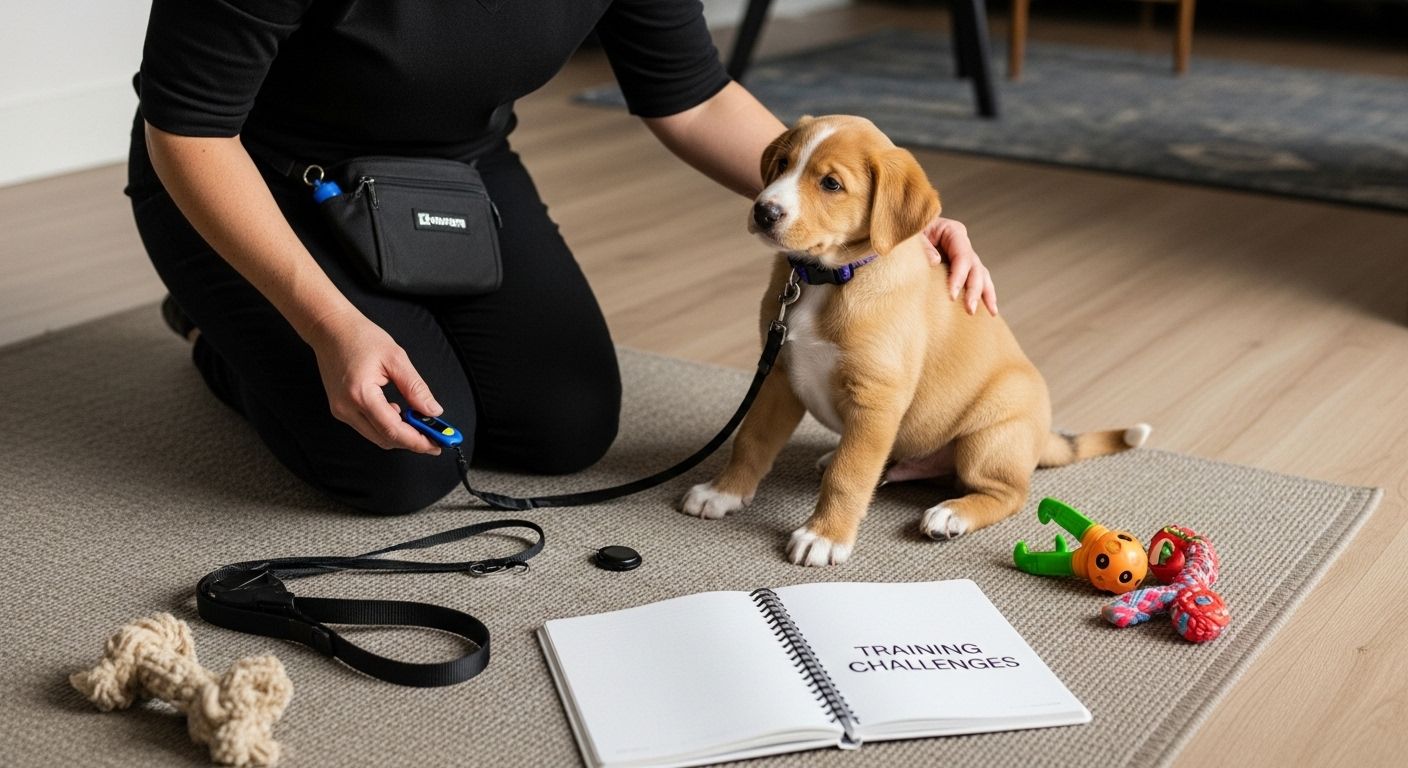Training a puppy is more than just teaching them to sit or stay. In fact, early socialization and targeted training can significantly improve puppy behavior and responsiveness according to research published in PubMed. Most people think the biggest issue is whether your puppy is stubborn or smart, but the real progress starts when you tailor your entire training approach to your puppy’s unique challenges and environment.
Table of Contents
- Step 1: Identify Specific Training Challenges
- Step 2: Prepare Your Training Environment
- Step 3: Implement Consistent Training Techniques
- Step 4: Monitor Progress and Adjust Strategies
- Step 5: Reinforce Positive Behavior and Celebrate Success
Quick Summary
| Key Point | Explanation |
|---|---|
| 1. Identify specific training challenges | Observe your puppy’s behaviors and document difficulties to tailor training methods effectively. |
| 2. Create an optimal training environment | Designate a distraction-free area and gather essential tools to foster a positive learning atmosphere. |
| 3. Consistent training techniques are essential | Use uniform commands and signals across all family members to prevent confusion and improve learning speed. |
| 4. Monitor progress and adapt strategies | Keep a detailed log of training sessions to track successes and difficulties, adjusting methods as needed. |
| 5. Reinforce positive behavior consistently | Match rewards to your puppy’s preferences and celebrate successes to deepen the bond and encourage motivation. |
Step 1: Identify Specific Training Challenges
Successful puppy training begins with understanding the unique challenges your specific puppy presents. Each dog comes with individual behavioral traits, learning styles, and potential obstacles that require personalized attention and strategic intervention.
Recognizing these challenges starts with careful observation and documentation. Spend several days closely monitoring your puppy’s behaviors, noting patterns of difficulty during different training scenarios. Watch for specific moments of resistance, confusion, or inconsistent responses. Is your puppy struggling with basic commands like sit or stay? Do they become easily distracted during training sessions? Are there particular environments or stimuli that trigger unwanted behaviors?
Learn more about understanding dog learning patterns can help you develop a more nuanced approach to identifying training challenges. By creating a comprehensive behavioral log, you transform vague frustrations into concrete, actionable insights.
This table organizes common puppy training challenges alongside potential root causes identified during the observation phase.
| Training Challenge | Potential Root Cause | Example Observation |
|---|---|---|
| Struggles with Commands | Unclear or inconsistent instruction | Puppy fails to respond to “sit” in sessions |
| Easily Distracted | Overstimulating environment | Puppy loses focus with new noises nearby |
| Unwanted Behaviors Emerge | Unidentified triggers or lack of structure | Displays jumping or barking at guests |
| Lack of Progress | Inconsistent training by handler | Varying methods used by different people |
| Resistance or Confusion | Misaligned expectations or signals | Puppy seems perplexed at new command |
Effective challenge identification requires honest self assessment alongside puppy observation. Consider your own training consistency, communication style, and patience levels. Many training difficulties emerge not from the puppy’s capabilities, but from misaligned expectations or inconsistent guidance. Reflect on your current training methods and be prepared to adapt.
According to research published in PubMed, early socialization and targeted training can significantly improve puppy behavior and responsiveness. This means your initial challenge identification phase is crucial for long term success.
Key verification indicators that you have successfully completed this step include:
- A detailed written log of specific behavioral challenges
- Clear understanding of your puppy’s unique learning triggers
- Identified moments of training difficulty with potential root causes
- Realistic assessment of both puppy and handler training capabilities
Remember, challenge identification is not about criticism but creating a foundation for tailored, compassionate training strategies. Your goal is understanding, not perfection.
Step 2: Prepare Your Training Environment
Creating an optimal training environment transforms puppy training from a challenging task into a smooth, enjoyable experience. Your physical space and setup dramatically influence your puppy’s ability to learn, focus, and respond to commands.
Start by designating a dedicated training area that minimizes distractions. This space should be quiet, relatively small, and free from high traffic or sudden noises. A corner of your living room, a spare bedroom, or a calm section of your kitchen can work perfectly. Ensure the area has good lighting, comfortable flooring, and enough room for both you and your puppy to move comfortably during training sessions.
Explore our comprehensive puppy training checklist to ensure you haven’t overlooked any critical environmental preparation steps. The right setup goes beyond just physical space it involves creating a consistent, predictable atmosphere that helps your puppy feel secure and ready to learn.
Gather essential training tools before beginning your sessions. You will need high value treats, a comfortable treat pouch, a lightweight leash, a clicker if you are using marker training, and a variety of engaging toys. Place these items within easy reach but not so close that they become a distraction. The goal is to create a seamless training environment where transitions between activities feel natural and smooth.
According to research published in animal behavior studies, puppies learn most effectively in environments that provide consistent, positive reinforcement. This means your training space should feel welcoming, safe, and free from potential stress triggers.
Key verification indicators that you have successfully prepared your training environment include:
- A designated, quiet training area with minimal distractions
- All necessary training tools organized and easily accessible
- Comfortable flooring or surface for training activities
- Consistent temperature and lighting conditions
- Removal of potential hazards or items that might overstimulate your puppy
Remember, your training environment is more than a physical space. It is a carefully crafted learning zone that sets the stage for successful communication and bonding with your puppy.
Here is a checklist table summarizing the key verification indicators for preparing your puppy training environment.
| Verification Indicator | Description |
|---|---|
| Designated Training Area | Quiet space with minimal distractions chosen specifically for training |
| Training Tools Ready | Essential items (treats, pouch, leash, clicker, toys) are gathered and organized |
| Comfortable Surface | Flooring or surface is safe and comfortable for your puppy |
| Consistent Lighting/Temperature | The environment has stable lighting and temperature suitable for training |
| Hazard-Free | Area is cleared of any distractions or potential hazards |
Step 3: Implement Consistent Training Techniques
Consistent training techniques form the backbone of successful puppy development, transforming random interactions into structured learning experiences. The key is creating a predictable communication framework that helps your puppy understand expectations and boundaries.
Begin by establishing a uniform set of verbal commands and hand signals that every family member will use identically. Choose short, clear words like sit, stay, come, and down. Each command should be spoken in the same tone and accompanied by the same precise hand gesture. This consistency prevents confusion and helps your puppy learn more rapidly. Practice these commands together with all household members to ensure everyone follows the exact same approach.
Learn about our proven dog training techniques to refine your approach and understand the nuances of effective communication. Consistency extends beyond just commands it encompasses your entire interaction style, including reward systems, correction methods, and overall energy during training sessions.
Reward based positive reinforcement works dramatically better than punishment. When your puppy performs a desired behavior, immediately offer a high value treat, enthusiastic praise, or a favorite toy. The timing of the reward is crucial it must happen within seconds of the correct action to help your puppy make a clear connection between the behavior and the positive outcome.
According to research from the Humane Society, puppies learn most effectively through consistent, positive reinforcement techniques that build trust and communication.
Key verification indicators that you have successfully implemented consistent training techniques include:
- All family members use identical command words and hand signals
- Rewards are consistently and immediately given for desired behaviors
- Training sessions maintain a positive, calm, and predictable atmosphere
- The puppy shows increasing understanding and responsiveness to commands


- Corrections are gentle, immediate, and redirect rather than punish
Remember, consistency is not about perfection but about creating a reliable, trustworthy learning environment for your puppy.
Step 4: Monitor Progress and Adjust Strategies
Monitoring your puppy’s training progress is a dynamic process that requires patience, keen observation, and a willingness to adapt. Tracking development isn’t about achieving perfection but understanding your puppy’s unique learning journey.
Begin by establishing a detailed training log that documents each training session. Record not just successes, but moments of struggle, distractions, and subtle behavioral changes. Note the time of day, duration of training, specific commands practiced, and your puppy’s energy levels and responsiveness. This documentation becomes your roadmap for understanding patterns and identifying areas that require additional attention or modified approaches.
Discover our comprehensive guide to dog training progression to help you develop a more nuanced approach to monitoring your puppy’s development. The most effective monitoring involves looking beyond simple command completion and examining the underlying confidence and understanding your puppy demonstrates.
Learning is rarely linear. Some days your puppy will excel, while other sessions might feel frustratingly challenging. Recognize that these fluctuations are normal and do not indicate failure. Pay close attention to your puppy’s body language, stress signals, and enthusiasm during training. A sudden decrease in engagement might signal that your current strategy needs refinement or that you’re moving too quickly.
According to research from the International Working Dog Registry, successful training involves continual assessment and strategic adjustments based on the individual dog’s responses and development.
Key verification indicators that you have successfully monitored and adjusted your training strategy include:
- A comprehensive training log with detailed session notes
- Ability to recognize and respond to your puppy’s learning patterns
- Flexibility in modifying training techniques based on observed responses
- Consistent positive reinforcement adjusted to your puppy’s current skill level
- Evidence of gradual skill progression across multiple training domains
Remember, monitoring is not about criticism but about creating a supportive, adaptive learning environment that celebrates small victories and understands that every puppy learns differently.
Step 5: Reinforce Positive Behavior and Celebrate Success
Reinforcing positive behavior transforms puppy training from a mere task into a meaningful bonding experience. Celebration is not just about rewarding actions but about building a deep, trusting relationship with your puppy.
The art of reinforcement goes beyond simple treat giving. It requires understanding your puppy’s unique motivational triggers. Some puppies light up with verbal praise, while others become most excited by a specific toy or a moment of playful interaction. Observe what truly makes your puppy’s tail wag and enthusiasm surge. This might be a special squeaky toy, a brief game of tug, or an exuberant round of belly rubs. The key is matching the reward precisely to your puppy’s individual preferences.
Explore our guide to dog training and bonding to deepen your understanding of creating meaningful connections through positive reinforcement. Remember that timing is everything when celebrating success. The reward must come immediately after the desired behavior, creating a clear, instantaneous connection in your puppy’s mind.
Develop a nuanced reward system that progressively challenges your puppy. Start with immediate, frequent rewards for basic commands, then gradually increase the complexity of tasks required to earn the same level of celebration. This approach maintains motivation while preventing treat dependency. Your enthusiasm matters as much as the reward itself speak in a high pitched, excited tone, use animated body language, and make the moment feel like a genuine celebration of achievement.
According to research on animal behavior and learning, positive reinforcement not only teaches commands but also builds confidence and strengthens the human animal bond.
Key verification indicators that you have successfully reinforced positive behavior include:
- Consistent, immediate rewards matching the puppy’s individual preferences
- Visible increase in puppy’s enthusiasm during training sessions
- Clear progress in command complexity and execution
- Puppy demonstrates willingness to attempt new challenges
- Strong, trusting relationship between handler and puppy
Remember, every small success is a milestone. Celebrate not just the perfect performances, but the effort, curiosity, and growing connection with your puppy.
Turn Puppy Training Frustration Into Clear Communication and Real Results
Are you feeling overwhelmed by inconsistent training sessions and struggling to understand your puppy’s unique signals? Building on the article’s steps, such as consistent training techniques and monitoring progress, the core problem many new dog owners face is a lack of effective communication with their dog. When your puppy seems confused or fails to respond, it is not just about commands. Most setbacks happen because there is no clear way for your puppy to tell you what they really need. This can increase stress, delay progress, and leave both of you frustrated.

What if there was a tool that bridges that communication gap and empowers your training journey? The iPupPee alert device is designed for owners like you. It helps your puppy easily communicate at the touch of a button, offering a proven solution for reinforcing positive behavior, reducing miscommunication, and building a deeper bond. Success in training happens faster when you create a safe and supportive environment, and the iPupPee device unlocks a whole new level of connection. See how real pet owners use it in their daily routines at our product highlights and testimonials. Want to make your training process easier and more enjoyable starting today? Discover more training solutions and get started right now by visiting https://ipuppee.com.
Frequently Asked Questions
What are some common challenges in puppy training?
Common challenges include difficulty with basic commands, distractions during training sessions, and behavioral issues like jumping or barking. Each puppy is unique, and understanding individual behavioral traits is essential for effective training.
How can I create an optimal training environment for my puppy?
Designate a quiet, distraction-free area for training. Ensure good lighting, comfortable flooring, and remove potential hazards. Gather essential training tools like high-value treats, a clicker, and engaging toys before starting your sessions.
What are effective training techniques for puppies?
Utilize consistent verbal commands and hand signals, and maintain a positive reinforcement approach. Ensure that all family members use the same commands and techniques to avoid confusing the puppy, and reward desired behaviors immediately for best results.
How do I monitor my puppy’s training progress?
Keep a detailed training log documenting each session, noting successes, struggles, and distractions. Pay attention to your puppy’s body language and engagement levels, and adjust your strategies as needed to fit their learning pace.

